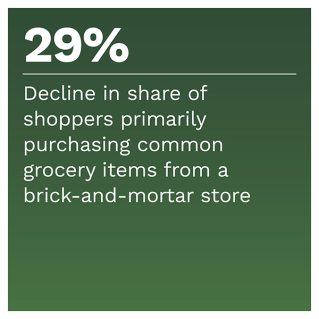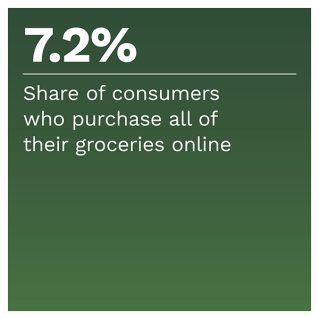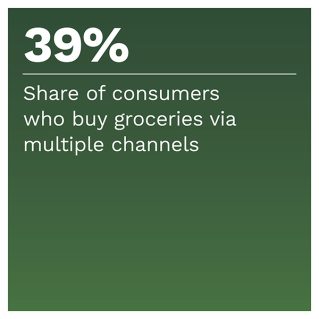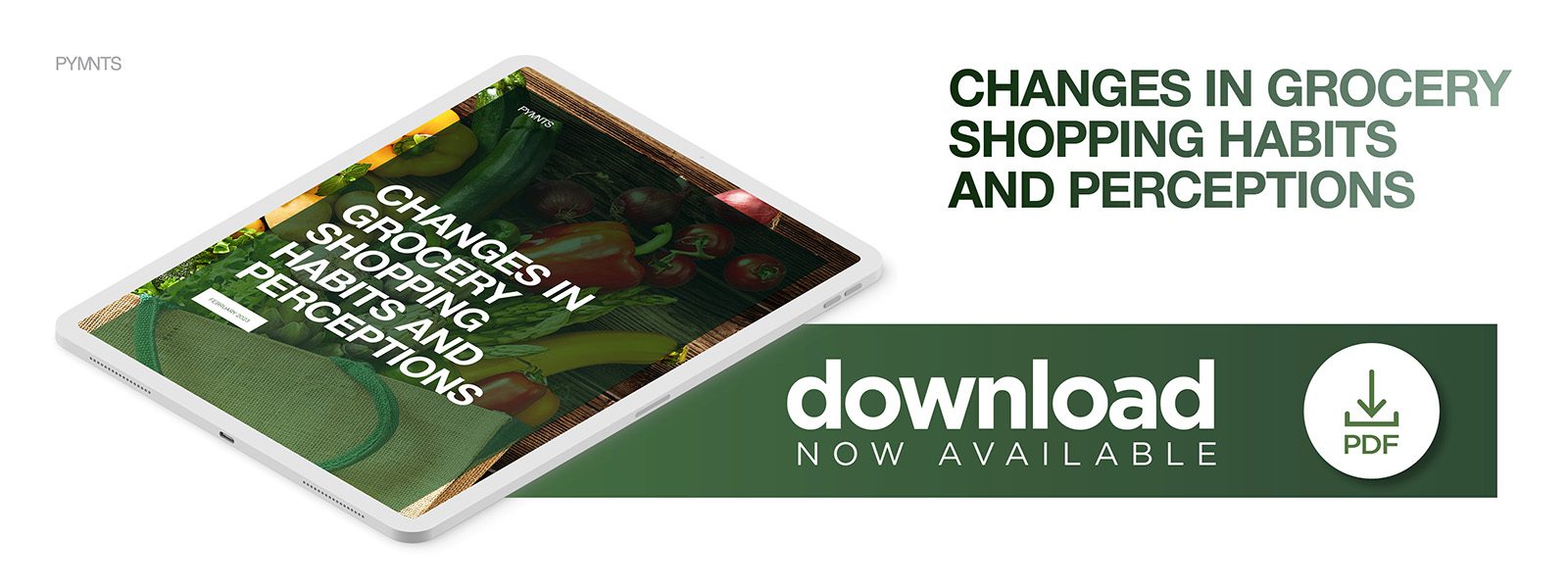7.2% of US Consumers Buy Groceries Online

The pandemic disrupted the reign of brick-and-mortar grocery stores as the go-to channel for most grocery shoppers. PYMNTS’ latest consumer research reveals that, on average, just 44% of consumers primarily purchase common grocery items at a brick-and-mortar grocery store, a significant decrease of 29% from what consumers said in the early, pre-pandemic days of 2020 — and this is just the beginning.
This is one of several key findings in “Changes in Grocery Shopping Habits and Perception.” For this report, PYMNTS surveyed 2,426 consumers in the United States to uncover their shifting grocery purchasing habits and the factors driving these changes.
• Grocery stores are in decline as shoppers turn from aisles to screens.
PYMNTS’ latest research shows that 77% of grocery shoppers overall reduced their grocery store purchases for at least one item category. This trend cuts across all demographic groups with little variation.  Forty-eight percent reduced purchases of cleaning supplies, followed by 47% for paper products and 38% for packaged items. Consumers also cut back heavily on buying food items, particularly frozen food, cut by 36% of consumers, and canned food, cut by 35%.
Forty-eight percent reduced purchases of cleaning supplies, followed by 47% for paper products and 38% for packaged items. Consumers also cut back heavily on buying food items, particularly frozen food, cut by 36% of consumers, and canned food, cut by 35%.
• Digital-only grocery shopping has become more popular.
The rise of digital-only grocery shoppers has skyrocketed from just 0.2% before the pandemic to 7.2% — a 3,600% increase, representing an estimated 16 million U.S. shoppers. These digital shopping pioneers are disproportionately bridge millennials and millennials. Eleven percent of bridge millennials and 13% of millennials use digital channels to purchase all their common household products.
• Convenience and deals are too good to pass up.
Consumers are increasingly turning to digital grocery shopping for two primary reasons: convenience and better deals. Sixty-two percent cited convenience as a major factor for going digital, with 36% saying this was their top motivation. The possibility of better deals and benefits lured 54% of consumers into shopping via digital channels, with 32% highlighting it as their top reason.
Some factors appeal more to some generations than others. Younger shoppers, for example, were more likely to cite convenience as their primary driver, while older consumers are more likely to cite an appetite for better prices and deals.
To learn more about what grocery stores and retailers need to do to meet the changing purchasing habits of shoppers, download the report.
